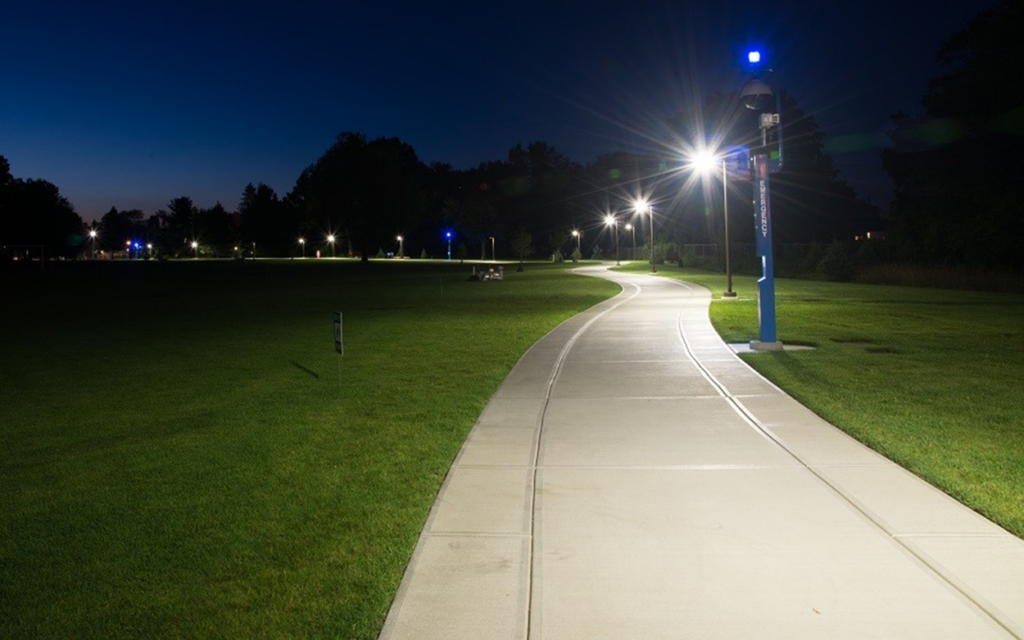Problem Statement
A 2021 survey of college students published by ADT and the Cleary Center found that more than 82% of students felt concerned about their personal safety on their college campuses, with 74% reporting that they feel unsafe walking home in the dark, and 65% reporting that they feel unsafe leaving a bar or party alone [1]. A Department of Justice special report found that 92% of 4-year college campuses have blue-light emergency phones [2], mostly implemented in the early 1990s. However, according to the Lafayette College Director of Public Safety, Lafayette’s blue-light emergency phones have never been used to call in a legitimate emergency, and multiple institutions across the country have chosen to remove their blue light systems. Students still feel unsafe at college campuses and are in need of an updated safety system.

-
- This is a good example of the current goal of blue lights. While walking through a college campus, there should always be one visible at any point. From this picture, three are visible on the same path. There still exists the inherent flaw of the system which is that these points of safety cannot move with a user and a person has to stand by the blue light until help arrives.
Walking Through College Campuses Alone At Night
We are a motivated group of seniors who want to make students more comfortable walking around college campuses at night. Through personal experience, talking with our peers, and conducting research we’ve realized that safety is a significant limiting factor that prevents people from walking around alone at night. Whether this safety risk comes from low light, low cell service, or another person(s), we’re tackling the issue one step at a time. Through our research, it has been clear that walking around a college campus at night is unavoidable. We hope to expand upon the current blue light systems on many college campuses to promote safety on campuses. It is important to note that feeling safe and being safe are different but through our solution, we hope to address both cases on any given college campus.
Our Process
Our group formed around a common desire to ideate and fabricate a robust solution to a real-world problem. We began our problem selection process by collecting data from several different interest groups, exploring the problems those groups face, and consequentially narrowing down our problem space to focus on campus safety at night. Our team made a number of educated assumptions about the problem space and validated these assumptions using data. Through expert interviews and surveying, our team identified user needs and translated them into functional requirements. We now have a well-defined problem space and are well set up to navigate a solution space!
Summary of Work
Initially, we identified market segments that aligned with our shared passions and interests. We accumulated a list of market segments and then conducted interviews to discover problems that existed in these areas. From this brainstorming and interviewing, we arrived at the problem of the safety of people walking alone at night. We pivoted to addressing the problem of assisting runners alone at night based on professor and stakeholder feedback. After this, we surveyed runners to find how runners personally felt and talked to Runner’s World about this issue and this showed that there is an interest and market to address this problem. Then after an in-depth and eye-opening discussion with another professor, we pivoted again. Now we are working together to solve the problem of campus safety by working to improve the usefulness of the blue light system that can be found on many college campuses.
References